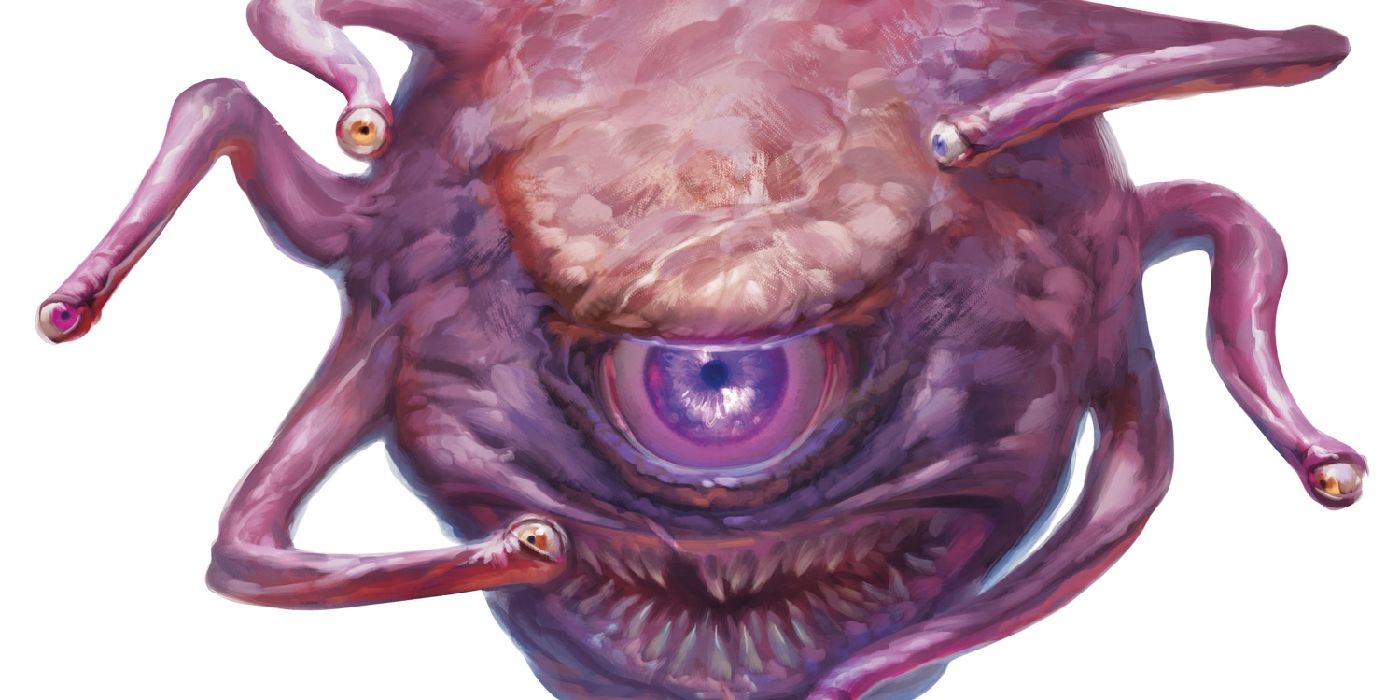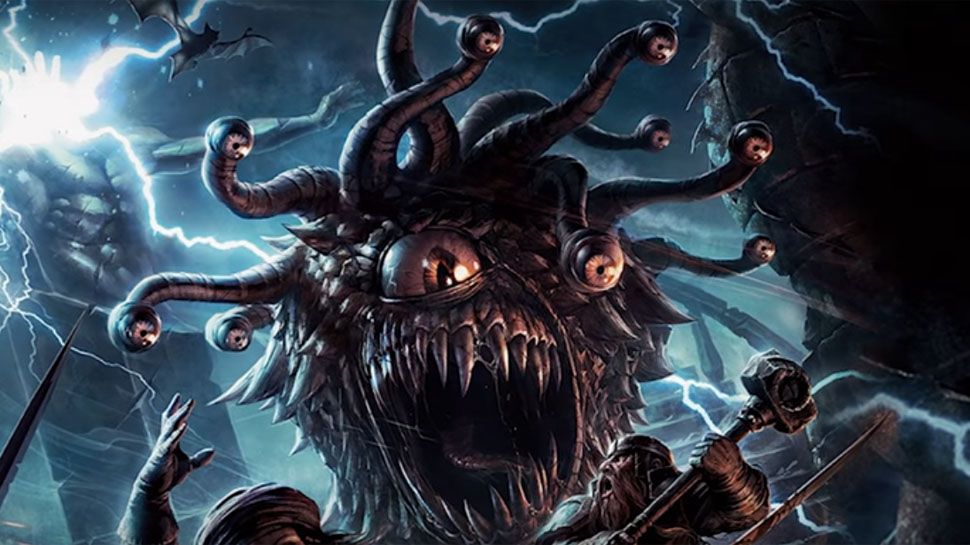In Dungeons and Dragons, there are many fearsome and bizarre monsters, but few are more widely known and avoided than the Beholder. These creatures are deranged aberrations capable of incredible, reality-bending feats. Their large eye and several eye stalks are easily recognizable by even the most novice adventurers and have brought ruin to many. The lore behind the Beholder is actually quite expansive, and there is much more that most players and even dungeon masters don't know about these monsters. But knowing is half the battle, so here's everything tabletop fans should know about the Beholder, including its intricases, nuances, and even how they might be used in a campaign to make combat encounters more compelling in 5e.
For those that don't know, the Beholder has been a monster in Dungeons and Dragons almost since the very beginning. The 1975 book Greyhawk introduced the Beholder, and it has been a staple in the Dungeons and Dragons vocabulary ever since. This creature is a floating mass of flesh, with one distinct, large eye on the center of the ball and several eyestalks protruding as well. Most adventurers know that these eye stalks are capable of shooting laser beams, each to a different effect, but not many know about the other bizarre things Beholders can do and how they can be utilized to the greatest effect in a campaign.
The Beholder's eye beams are by far its most recognizable powers, and each eye has a different effect. When the Beholder fires its eye ray, it produces one random effect from this list: charm, paralysis, fear, slow, enervation, telekinesis, sleep, petrification, disintegration, and death. Although some of these effects are worse than others, none are pleasant, and all can easily result in the death of an unprepared or underleveled player. Additionally, the Beholder's larger central eye constantly creates an area of anti-magic in a 150 foot cone in the direction he faces. This is extremely crippling to mages or anyone relying on any of the great DnD 5e magic items, although its worth noting that this cone of anti-magic suppresses even its own other eye beams.
Something which is not as well known about Beholders is that they are capable of altering reality with their dreams. When a Beholder sleeps, the area around it and its lair are warped to mimic its dreams, altering the very fabric of reality itself. This is represented in game by its lair actions which can cause surfaces to become slimy, difficult terrain, the grasping appendages it can sprout from the wall, and its ability to fire eye rays from magical eyes appearing on the wall. Truly, though, there are no limits to what a Beholder can create, modify, and even erase from reality through its dreams. In fact, a Beholder is even able to change itself. A great tip for dungeon masters is to use this effect to mess with players.
There are actually several subspecies of Beholders. Most Beholders are not born into one of these subspecies, but instead warp and twist themselves into one through their dark dreams. The Eye of Flame and the Eye of Frost are elementally charged Beholders, and exhibit slightly different behavioral tendencies than normal Beholders. The Death Tyrant is a truly terrifying species, and is the result of a Beholder dreaming of his own death and living beyond it. This undead variant of a Beholder is capable of controlling a limitless number of undead, and can completely nullify all restorative effects within its gaze. Many other types of Beholders exist as well, but these are some of the more unique ones.
Beholders are certainly fierce creatures, their many capabilities and variants are widely unknown. Dungeon masters can benefit greatly from putting these recognizable and deadly enemies in their campaign, whether as a creature to fight for higher level players or as something to be avoided in lower level campaigns. When using Beholders, it is important to portray their insanity, greed, and violence as prominent features in their personality, but also understand that they are intelligent and will not make stupid decisions. Throwing experienced Dungeons & Dragons players off with one of the many variants can also be fun, but all in all, the Beholder certainly will spice up any campaign.


